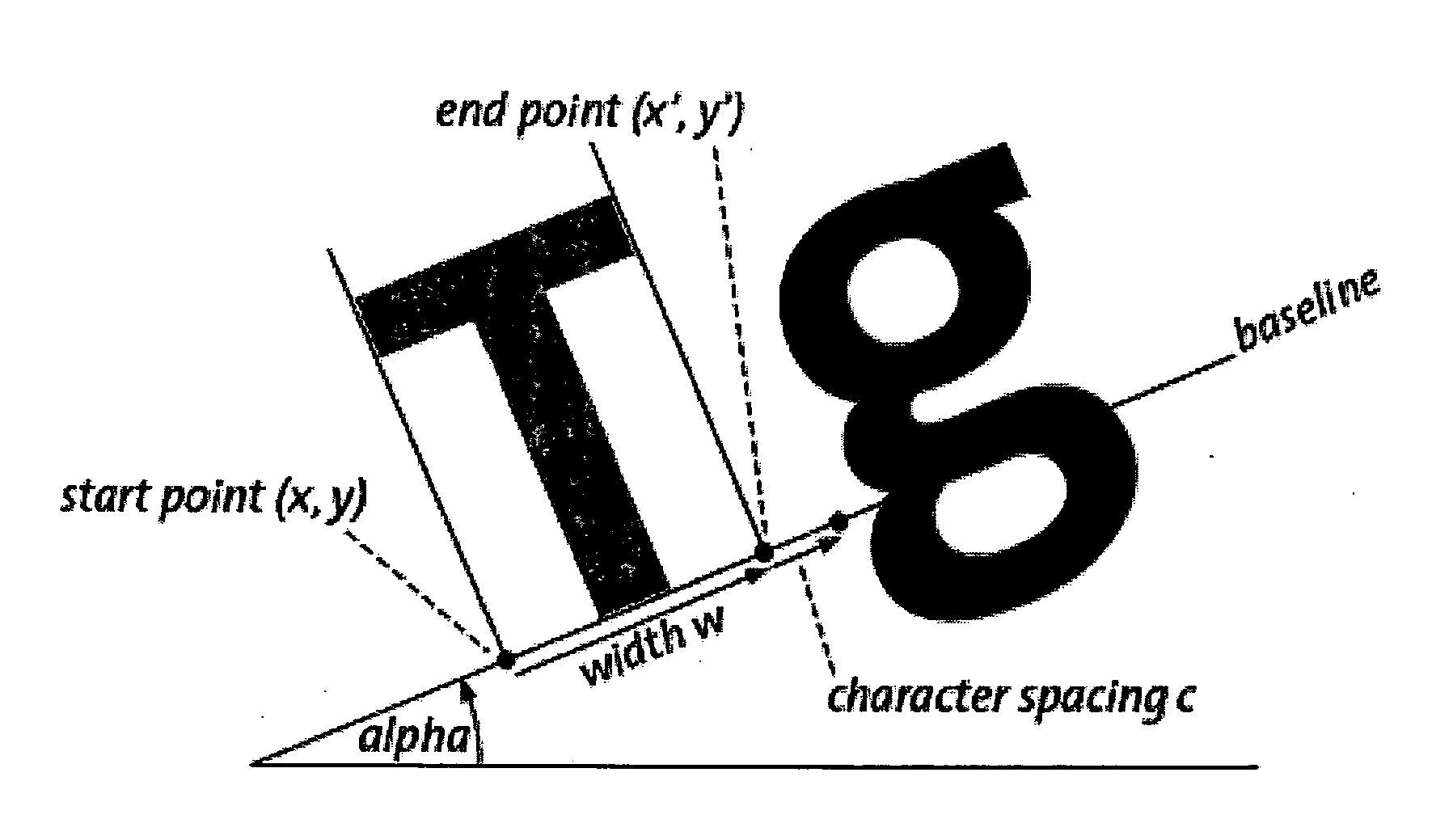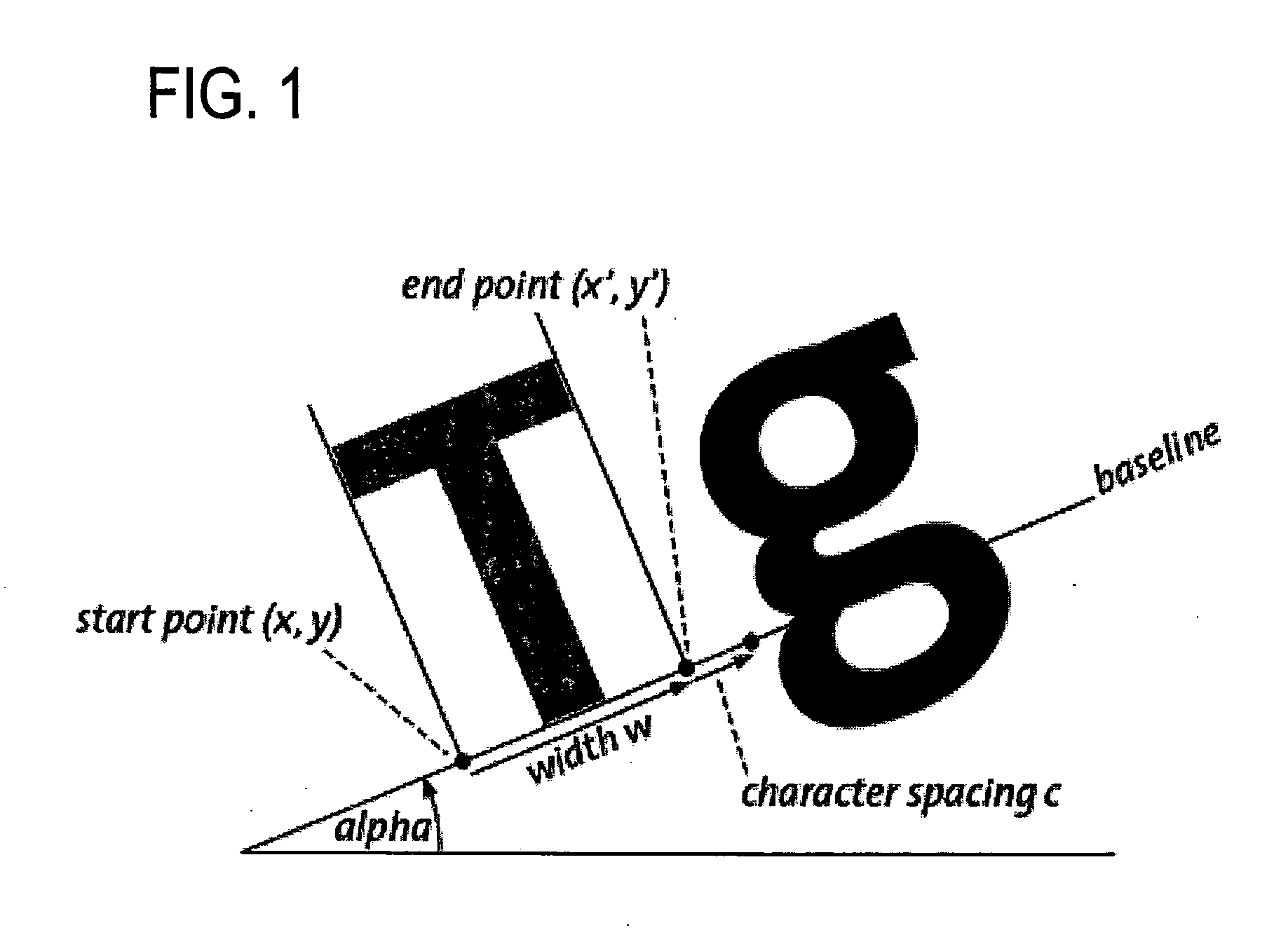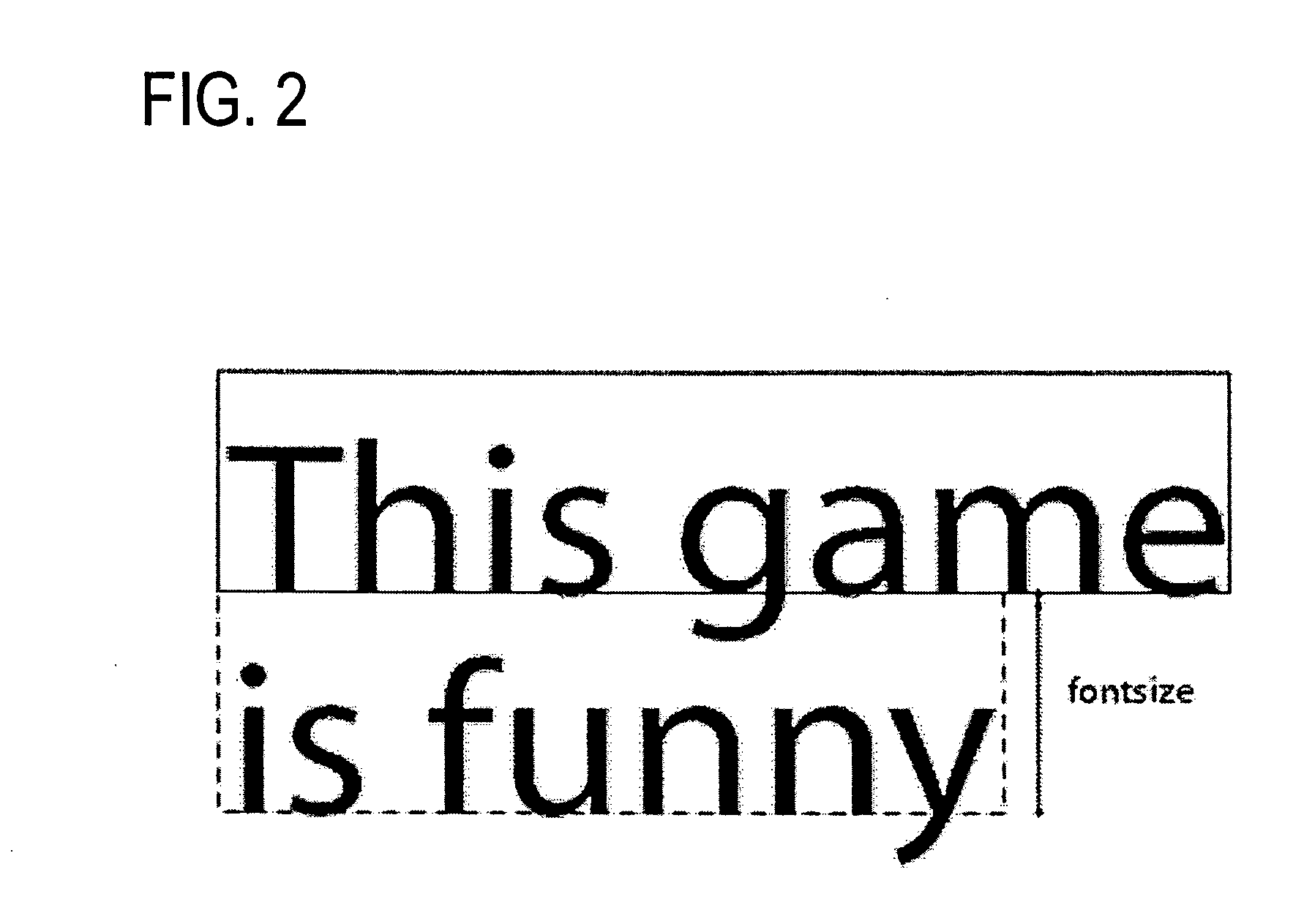Method of identifying semantic units in an electronic document
- Summary
- Abstract
- Description
- Claims
- Application Information
AI Technical Summary
Problems solved by technology
Method used
Image
Examples
Embodiment Construction
[0041] In FIGS. 1 and 2, general glyph metrics used in the method according to the invention are illustrated. As shown in FIG. 1, every glyph on the page has a position (x, y) which is measured at its start point and a glyph width w which is derived from the font metrics and the text parameters. The angle “alpha” is the angle of the text baseline on which the glyph is based. Contrary to the example shown in FIG. 1, “alpha” will be “0” in most cases, i.e., the glyph is displayed in a line horizontally on the page. Applying the width w at (x, y) in direction “alpha” yields the end point (x′, y′) of the glyph. Since a character spacing c may have been specified to increase or decrease the space between glyphs, the end point (x′, y′) of the previous glyph is not necessarily identical to the start point of the next glyph. The character spacing c may be set individually for each glyph (e.g., to achieve keming, or tighter spacing for certain critical pairs such as “Ty” in so...
PUM
 Login to View More
Login to View More Abstract
Description
Claims
Application Information
 Login to View More
Login to View More - R&D
- Intellectual Property
- Life Sciences
- Materials
- Tech Scout
- Unparalleled Data Quality
- Higher Quality Content
- 60% Fewer Hallucinations
Browse by: Latest US Patents, China's latest patents, Technical Efficacy Thesaurus, Application Domain, Technology Topic, Popular Technical Reports.
© 2025 PatSnap. All rights reserved.Legal|Privacy policy|Modern Slavery Act Transparency Statement|Sitemap|About US| Contact US: help@patsnap.com



